LISTEN TO THIS ARTICLE
Key Takeaways
- Steady Growth: Despite the challenges posed by the ongoing pandemic, the commercial real estate market has shown remarkable resilience and has been experiencing steady growth.
- Changing Work Landscape: The COVID-19 pandemic has undoubtedly reshaped the way we work, and this has had an impact on the commercial real estate sector.
- Sustainable Development: Environmental sustainability has become a prominent focus in recent years, and the commercial real estate market is no exception.

Commercial Real Estate Q3 2023 Market Outlook Statistics: Information and Indicators of a Slowing Economy
The commercial real estate industry is a dynamic sector that experiences constant shifts due to various factors such as economic conditions, technological advancements, and demographic changes.
As we open the book of the third quarter of 2023, it is crucial to understand the current outlook and statistics of the commercial real estate market. In Q1 2023, the economic outlook displayed a mix of optimism and caution, due to ongoing economic uncertainty posed by COVID repercussions and anxiety over inflation.
The U.S. labor market continued its uneven recovery, with the unemployment rate dropping to 4.2%, influenced largely by the return to the workforce as the pandemic waned.
While the broader U.S. commercial real estate market showed some signs of recovery in Q1, the office sector continued to grapple with the consequences of the new normal of remote working, resulting in a surplus in office space and downward pressure on rent prices.
The property market also experienced mixed outcomes, with a strong residential real estate demand countering the sluggish office sector.
Despite robust real estate services by JLL and other firms, the high interest in residential properties did not significantly upgrade the overall market performance.
On the downside, concerns grew around a mild downgrade for the second half of 2023, mainly stemming from potential rate hikes by central banks.
While the investment-grade market demonstrated resilience, particularly in combined industrial metros, the real economic activity elsewhere trended lower due to a lack of fiscal stimulus and warning signs from some regional banks in the U.S.
Emphasizing these concerns, as of May 2023, the S&P 500 underperformed compared to the first half of the year, mirrored by the entire Russell Small-cap Index.
Even with economic news occasionally skewing to the downside, growth, and household spending showed some positive signs as credit conditions improved at the end of the pandemic.
However, based on our view, the rest of the year is expected to see modest growth, hovering around the new normal that emerged in the wake of COVID-19.
By the end of 2023, the commercial real estate market is expected to align with the projected lower growth trajectory, with the exception of real assets like combined industrial properties that are likely to weather the storm.
This projection is keeping in mind the complex interplay of various market forces since the end of Q1, the high-interest environment, and the evolving economic data.
Explanation of Q3 2023 Commercial Real Estate Outlook and Significance
The commercial real estate outlook for Q3 2023 shows promising growth.
This positive trend is largely attributed to the gradual recovery from the economic downturn caused by the global pandemic.
The market has seen a significant increase in property transactions, with retail and industrial sectors leading the way.
The rise in remote working has led to an increased demand for flexible office spaces.
This shift has prompted property developers and investors to adapt their strategies to meet this new demand.
The significance of this outlook is that it provides insights into market trends, helping investors make informed decisions about their investments.
2022 vs. 2023 Commercial Real Estate Sales
A comparative analysis of 2022 to 2023 sales reveals a positive trajectory in the commercial real estate market.
| Year | Sales |
|---|---|
| 2022 | $500B |
| 2023 | $550B |
This table indicates a 10% increase in sales from 2022 to 2023 so far, demonstrating that the sector is on a path of recovery and growth.
This upward trend signals a robust commercial real estate market, providing opportunities for investors and stakeholders alike.

Commercial Real Estate Trends Across Asset Classes
In the third quarter of 2023, the commercial real estate market has been experiencing dynamic shifts across various asset classes.
The sector has seen significant changes due to factors such as evolving consumer behavior, technological advancements, and economic conditions.
The US commercial real estate sector has experienced significant changes over the years due to a multitude of factors such as evolving consumer behavior, advanced technology, and constantly shifting economic conditions.
This changing landscape has seen both resilient phases and periods of weakening, proving the sector’s dynamic nature.
Economic recessions often weaken commercial real estate markets.
During the recession of the first quarter of 2023, many businesses faced significant headwinds due to lackluster economic conditions.
Unsurprisingly, this situation has negatively affected the valuation of commercial buildings, causing a substantial reduction in their investment grade.
The resultant turn of events also led to a tightening of the liquidity in the market, further compounding the drawbacks.
Meanwhile, the housing market displayed fundamental resilience even amidst this challenging economic environment.
This resiliency could be attributed to solid foundational aspects and a favorable economic basis of 4.2 basis points compared to the 10-year average.
Despite the tough economic conditions, the commercial center real estate remained robust and continued to attract investments, indicating the sector’s inherent durability.
Projecting into 2024, while we expect a recovery in the second half of the year, we also foresee additional headwinds that could weaken the sector further.
That said, with continuous digital advancements altering consumer behavior dramatically, the commercial real estate market is anticipated to respond accordingly by evolving its operations and services.
Despite the changes and possible challenges, the sector will continue to adapt driven by its fundamental resiliency.
Current Trends in Various CRE Sectors
Retail: The retail sector continues to transform, with e-commerce driving demand for logistics and warehouse spaces. Traditional brick-and-mortar stores are reimagining their spaces to offer experiential retailing.
Office: Workplace strategy is undergoing a seismic shift. With the rise of remote working, companies are re-evaluating their office space needs, leading to increased demand for flexible workspaces.
Industrial: The industrial sector remains robust due to the continued growth of e-commerce. Demand for logistics properties and data centers is high, driven by increased online shopping and data consumption.
Hospitality: The hospitality industry is recovering steadily as travel restrictions ease. However, the sector continues to innovate, with a focus on health and safety measures.
Multifamily: The multifamily sector continues to perform well due to steady demand. However, there is a notable shift towards suburban living.
Various CRE Sectors in Comparison
| Sector | Q3 2023 Performance |
|---|---|
| Retail | Stable |
| Office | Transforming |
| Industrial | Robust |
| Hospitality | Recovering |
| Multifamily | Steady |
These trends provide a snapshot of the current state of the commercial real estate market in Q3 2023.

Multifamily Rental Costs
Commercial real estate has seen a significant shift in Q3 2023, particularly within the multifamily sector.
The multifamily rental market has experienced an unprecedented surge in rental costs.
This trend is primarily driven by a combination of factors, including increased demand for rental properties, limited supply, and rising construction costs.
Rising Rental Costs in the Multifamily Sector
The multifamily sector has been a major focus due to its resilience and consistent performance.
However, the recent rise in rental costs has raised concerns among investors and renters alike.
The increase can be attributed to several factors such as high demand for rental properties due to changing lifestyles, limited supply due to slow construction rates, and increased construction costs due to inflation.
Multifamily vs. Residential Rental Costs
A comparison between multifamily and residential rental costs reveals interesting insights.
Multifamily rental costs have seen a sharper increase compared to residential rentals. According to data from various Real Estate Investment Trusts (REIT), multifamily rents have increased by 5.8% in Q3 2023, compared to a 3.2% increase in residential rentals.
This difference underscores the increasing demand for multifamily rental properties and the need for strategic investment decisions in this sector.

Office Space Demand and Performance (CRE Uncertainty)
The commercial real estate market has been significantly impacted by the shift towards remote and hybrid work models.
This transformation has brought about a noticeable change in the demand for office spaces, talks of building conversions, and the performance of A-class properties.
Remote/Hybrid Work Office Space Impact Analysis
The rise in remote and hybrid work models has led to a decrease in demand for traditional office spaces.
Many businesses have downsized their physical offices, opting for flexible workspace solutions to accommodate their hybrid workforce.
As a result, A-class properties, known for their premium amenities and high rental rates, have experienced a decline in occupancy rates.
It’s not all doom and gloom for A-class properties.
These premium spaces are being repurposed to meet the changing needs of businesses.
They are being transformed into collaborative spaces, wellness centers, or tech-enabled meeting rooms that cater to the requirements of a hybrid workforce.
2023 Office Space Demand vs. Vacancy Rates
In Q3 2023, office space demand continued to be influenced by the prevalence of remote and hybrid work models.
The vacancy rate for office spaces increased slightly due to reduced demand.
The demand for flexible workspace solutions saw an uptick, indicating a shift in business preferences.
To sum up, while traditional office spaces are facing challenges due to changing work models, they are also evolving to meet new demands.
The commercial real estate market continues to adapt to these changes, offering new opportunities for investors and businesses alike.

Industrial and Warehouse Sector (Evolution and Growth)
As the third quarter of 2023 unfolds, the commercial real estate landscape continues to evolve, with the industrial and warehouse sector standing out as a significant growth area.
The sector’s performance has been bolstered by several factors, including the e-commerce boom, supply chain disruptions, and increased demand for storage and distribution facilities.
Growth and Performance of the Industrial and Warehouse Sector
Data from Q3 2023 reveals a robust industrial market with rising demand for warehouse space.
According to a report by CBRE, industrial lease rates have increased by 5.2% year-over-year, reflecting strong demand.
The warehouse sector has also seen an uptick in activity.
The NAIOP’s Industrial Space Demand Forecast indicates a 4.8% increase in net absorption of industrial space in Q3 2023 compared to the same period in 2022.
Investments in the industrial and warehouse sectors have also been noteworthy. Real Capital Analytics (RCA) data shows that investment volume in this sector reached $45.7 billion in Q3 2023, a 6.7% increase from Q2.
These trends underscore the resilience of the industrial and warehouse sector amidst changing economic conditions.
The continued growth trajectory suggests that this sector remains a viable investment opportunity for commercial real estate investors.
Key Q3 2023 Industrial Statistics
| Key Statistics | Q3 2023 Data |
|---|---|
| Industrial lease rates | Increased by 5.2% YoY |
| Net absorption of industrial space | Increased by 4.8% YoY |
| Investment volume | Reached $45.7 billion, up by 6.7% from Q2 |
The future outlook remains positive as businesses continue to adapt to new operational norms, driving demand for industrial and warehouse spaces.

Retail Sector (Inflation Hits Hard, Consumer Spending Factor)
As Q3 2023 unfolds, the commercial real estate landscape continues to evolve, with the retail sector experiencing significant shifts.
The retail sector has witnessed a blend of challenges and opportunities, underpinned by changing consumer behaviors, technological advancements, and macroeconomic conditions.
Evaluation and Opportunity Challenges in the Retail Sector
Challenges: The retail sector has been grappling with several challenges. The rise in e-commerce has led to a decrease in foot traffic in physical stores. According to Statista, e-commerce sales are projected to reach 22% of global retail sales by 2023, up from 14.1% in 2019.
Opportunities: Despite these challenges, opportunities abound. The advent of experiential retail is redefining the traditional shopping experience. Retailers are leveraging technology to create immersive experiences that drive customer engagement and loyalty.
In terms of statistics, data from CBRE indicates that retail leasing activity remained robust in Q3 2023, with demand for urban and suburban retail spaces on the rise.
Retailers are also capitalizing on the trend of mixed-use developments, which combine residential, office, and retail spaces.
The outlook for the retail sector in Q3 2023 is a mixed bag.
While challenges persist, innovative strategies and evolving consumer preferences present opportunities for growth and resilience in this dynamic sector.

Hotel and Hospitality Industry Return from Decimation
The hotel and hospitality industry has witnessed a significant shift in Q3 2023.
The industry is gradually recovering from the devastating effects of the global pandemic.
Post-pandemic Recovery of the Hotel and Hospitality Industry
Data from Q3 2023 reveals a promising recovery for hotel and hospitality-related businesses.
Occupancy rates have started to climb, with an average increase of 10% compared to the same period in 2022.
This increase is largely attributed to the easing of travel restrictions and a resurgence in domestic and international tourism.
The industry’s revenue per available room (RevPAR) also showed a positive trend, with a 15% increase year-over-year.
This is indicative of a growing demand for hotel accommodations and services.
In terms of future prospects, experts predict a steady growth trajectory for the hotel and hospitality industry.
The commercial real estate market is expected to benefit from this resurgence, with increased investments in hotel properties anticipated.
It’s important to note that while these statistics are encouraging, the industry’s recovery is still ongoing.
The sector continues to face challenges such as labor shortages and fluctuating travel regulations due to the pandemic’s uncertain nature.
Q3 2023 Hospitality Statistics
| Metric | Percentage Increase |
|---|---|
| Occupancy Rates | 10% |
| RevPAR | 15% |
Overall, the outlook for the hotel and hospitality industry in Q3 2023 remains cautiously optimistic as it navigates towards full recovery.

Market Uncertainty and Investor Sentiment
Commercial real estate (CRE) has been a cornerstone of investment portfolios for many years.
The Q3 2023 outlook presents a mix of opportunities and challenges.
CRE Uncertainties and Implications for Investors
The commercial real estate market in Q3 2023 is characterized by a high degree of uncertainty.
This is primarily due to the ongoing global economic instability, fluctuating interest rates, and the unpredictable nature of the COVID-19 pandemic.
Investor sentiment has been significantly influenced by these factors.
There is a noticeable shift towards caution, with investors increasingly focusing on risk management strategies.
Despite these challenges, the commercial real estate market continues to offer opportunities for savvy investors.
Industrial properties, such as warehouses and logistics centers, have seen increased demand due to the rise in e-commerce activities.
Similarly, data centers and healthcare facilities continue to perform well.
Q3 2023 Commercial Property Type Performance Statistics
| Property Type | Performance |
|---|---|
| Industrial | High Demand |
| Data Centers | Stable |
| Healthcare | Stable |
With uncertainties abounding in the Q3 2023 commercial real estate market, strategic investment decisions backed by thorough research could still yield positive returns.

Final Thoughts and Forecast
In the third quarter of 2023, the commercial real estate market experienced significant changes.
The market’s performance was driven by several factors, including economic recovery, technological advancements, and evolving tenant demands.
Q3 2023 Key CRE Market Findings
Economic Recovery: The global economy’s steady recovery from the COVID-19 pandemic has positively impacted the commercial real estate sector. Increased business activities have led to a surge in demand for commercial spaces, particularly in sectors like retail and logistics.
Technological Advancements: The integration of technology into commercial real estate has been a game-changer. The use of AI and big data in property management and transactions has improved efficiency and transparency, attracting more investors to the market.
Evolving Tenant Demands: Changing tenant demands have led to a shift in commercial real estate offerings. There is an increasing demand for flexible spaces and green buildings, pushing developers to innovate.
Looking ahead, these trends are expected to continue shaping the commercial real estate landscape.
The market is projected to grow steadily, driven by economic recovery and technological advancements.
Q3 2023 Commercial Real Estate Outlook
| Key Findings | Forecast |
|---|---|
| Economic Recovery | Continued growth in business activities will drive demand for commercial spaces. |
| Technological Advancements | The use of AI and big data will continue to improve efficiency and attract more investors. |
| Evolving Tenant Demands | Developers will need to innovate and offer flexible spaces and green buildings to meet changing tenant demands. |
Reference Statistics
In the third quarter of 2023, the commercial real estate market has been showing intriguing data.
The market’s resilience, coupled with the robust demand for industrial and office spaces, is painting a promising picture.
Based on the latest statistics, commercial property investment, which hovered around $13.0 billion in Q1, saw an impressive leap to approximately $15.2 billion in Q2, marking a 16.9% quarter-over-quarter increase.
The third quarter indications are proving even more heartening, with projections hovering around $17.4 billion – a staggering 14.4% increase over the previous quarter.
Sector-wise, industrial real estate takes the lead with a record-breaking surge in demand. It is estimated that the demand in Q3 increased by 20.7% compared to Q2.
Office spaces weaned off the pandemic’s impacts, recorded a surge of 12.3%. Multi-family properties and retail spaces also made a notable comeback, marking an uptick of 10.5% and 9.3%, respectively.
What’s compelling about the Q3 2023 market stance is the growing interest in suburban commercial properties. Suburbs saw a 15.8% increase in commercial property demand, signaling a promising shift in market trends.
While the statistics show a booming market in Q3, it’s important to remember that real estate is a fluctuating market, sensitive to multiple influencing factors.
Nonetheless, the robust growth trajectory sets an optimistic tone, illuminating opportunities investors and stakeholders “may” find lucrative.
References
- Vanguard [1]
- Brand Assets [1]
- Cawley Chicago [1]
- Moody’s Analytics [1]
- Fit Small Business [1]
- FS Investments [1] [2]
- Institutional Real Estate, Inc. [1]
- Russell Investments [1]
- J.P. Morgan Chase [1] [2] [3]
- Altus Group [1]
- Avison Young [1]
- Biz Journals [1] [2]
- CBRE [1] [2] [3] [4]
- United States Census Bureau [1]
- Commercial Ledge [1]
- Credit Benchmark [1] [2]
- Cushman Wakefield [1]
- Door Loop [1]
- Ernst and Young [1]
- Forbes [1]
- Lee Associates [1]
- Matthews Real Estate Investment Services [1]
- Mortgage Bankers Association [1]
- MSCI [1]
- National Association of Industrial and Office Properties [1]
- National Association of Realtors [1] [2] [3]
- Old Republic Title [1]
- PwC [1]
- Radius Group [1]
- Real Page [1]
- Realty Mogul [1]
- The Real Estate Roundtable [1]
- Statistia [1]
- JLL [1] [2]
- Deloitte [1]


























